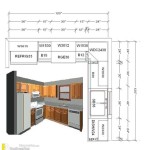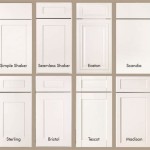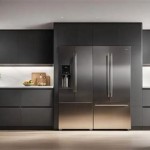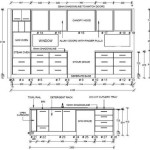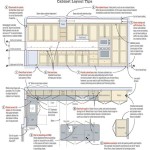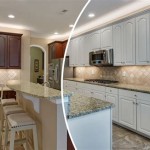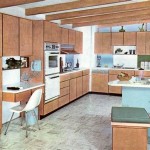How to Prevent Grease Buildup on Top of Kitchen Cabinets
Kitchen cabinets, particularly those above stoves and cooktops, are highly susceptible to grease buildup. This sticky residue accumulates over time, attracting dust and debris, creating a difficult-to-clean and unsightly mess. Preventing grease accumulation requires a proactive approach, incorporating regular cleaning practices, protective measures, and adjustments to cooking habits. This article will outline several effective strategies to mitigate grease buildup and maintain cleaner, more appealing kitchen cabinets.
Implementing Regular Cleaning Practices
Consistent cleaning is paramount in preventing significant grease accumulation. The frequency of cleaning depends on cooking habits and the amount of grease generated during meal preparation. Heavy cooking, especially frying, necessitates more frequent cleaning than kitchens where cooking involves mostly steaming or baking. A general recommendation is to clean cabinet tops at least once a month, or even bi-weekly if significant grease is noticeable.
The cleaning process itself is crucial. Avoid abrasive cleaners, which can damage the cabinet finish. Instead, opt for a solution of warm water and mild dish soap. A microfiber cloth is ideal for wiping surfaces; its texture effectively lifts grease and dirt without scratching. For older, tougher grease stains, consider using a combination of baking soda and water to create a paste. Apply the paste to the affected area, let it sit for a few minutes to loosen the grease, and then wipe it away with a damp cloth. Always ensure the cabinets are thoroughly dried after cleaning to prevent water damage.
Beyond the regular monthly or bi-weekly cleaning, spot clean any visible splatters immediately after cooking. This prevents grease from hardening and becoming more difficult to remove later. Keeping a spray bottle of diluted degreaser or all-purpose cleaner readily accessible can greatly simplify this task. Immediate response to spills and splatters makes a significant difference in the long-term maintenance of cabinet cleanliness.
Another component to consider is the effectiveness of the cleaning products used. While mild dish soap and water are often sufficient for routine cleaning, tougher grease buildup may require a more specialized degreaser. Look for degreasers specifically formulated for kitchen surfaces, ensuring they are safe for use on cabinet finishes. Always test the cleaner on an inconspicuous area of the cabinet before applying it to the entire surface to ensure it doesn't cause discoloration or damage.
Pay particular attention to the areas directly above the stove or cooktop. These areas are most prone to grease accumulation due to the direct proximity to cooking fumes. Consider increasing the frequency of cleaning in this area compared to other cabinets in the kitchen. Investing in a good quality kitchen degreaser can significantly reduce the effort required to maintain these high-grease zones.
Employing Protective Barriers
Protective barriers offer a physical shield against grease accumulation, significantly reducing the amount of cleaning required. Several effective options are available, each with its own advantages and disadvantages.
One popular option is using wax paper or parchment paper. These materials can be cut to size and placed on top of the cabinets. They are easy to replace and relatively inexpensive. When they become soiled with grease, simply remove and discard them, replacing them with fresh sheets. While cost-effective, wax paper and parchment paper may shift or slide around, requiring occasional readjustment. Furthermore, they are not aesthetically pleasing, so it could stand out and look unsightly.
Another alternative is using shelf liners. These liners are typically made of plastic or rubber and offer a more durable and stable barrier than wax paper. They are often textured to prevent slipping and can be wiped clean if they become soiled. Shelf liners are available in various colors and patterns, allowing for a more discreet and visually appealing solution. They are also slightly more expensive than wax paper, but their durability and ease of maintenance make them a worthwhile investment.
Clear plastic wrap is another protective barrier option. Carefully stretch plastic wrap across the top of the cabinets, ensuring it is taut and secure. Like wax paper, plastic wrap is easily replaceable and cost-effective. However, it can be challenging to apply smoothly without wrinkles or air bubbles. Additionally, plastic wrap can become brittle and tear over time, requiring more frequent replacement. For all of these options, make sure that they are heat resistant and fire retardant.
A more permanent solution is to apply a layer of clear polyurethane varnish or sealant to the top of the cabinets. This creates a smooth, non-porous surface that is resistant to grease and easy to clean. However, this option requires more effort to apply and may alter the appearance of the cabinets. If considering this approach, it is essential to properly prepare the surface and apply the varnish or sealant according to the manufacturer's instructions. This is also a more costly alternative to the others.
Regardless of the chosen barrier, it's imperative to regularly inspect and replace it as needed. A soiled or damaged barrier is no longer effective and can actually contribute to grease buildup by trapping dirt and debris. Establishing a routine for checking and replacing the barrier will ensure it continues to provide adequate protection.
Modifying Cooking Habits and Improving Ventilation
Adjusting cooking habits and optimizing kitchen ventilation can significantly reduce the amount of grease released into the air, minimizing the buildup on cabinet surfaces. These strategies address the root cause of the problem rather than simply masking the symptoms.
When frying foods, use a splatter screen to contain grease splatters. Splatter screens significantly reduce the amount of grease that escapes the pan and lands on surrounding surfaces, including cabinet tops. Ensure the splatter screen is appropriately sized for the pan to maximize its effectiveness. Clean the splatter screen regularly to prevent grease from accumulating on it and becoming a fire hazard.
Consider using alternative cooking methods that generate less grease. Baking, grilling, steaming, and poaching are all healthier options that produce significantly less grease than frying. Incorporating these methods into meal preparation can significantly reduce the amount of grease released into the air and deposited on surfaces. Additionally, these cooking methods are more energy-efficient and contribute to a healthier diet.
Ensure the kitchen has adequate ventilation. A range hood or exhaust fan is essential for removing cooking fumes and grease from the air. Regularly clean the range hood filters to maintain optimal performance. Depending on the type of filter, cleaning may involve washing it with soap and water or replacing it altogether. A clogged filter reduces the range hood's effectiveness and allows more grease to escape into the kitchen. Replace or clean the filter at least once a month, or more frequently if cooking generates a large amount of grease.
Proper ventilation isn't limited to range hoods; ensure that windows and doors are also open during and after cooking. This facilitates airflow, which helps to dissipate cooking fumes and prevent grease from settling on surfaces. While natural ventilation is beneficial, it may not be sufficient in all situations, particularly during inclement weather. In such cases, relying on the range hood is crucial.
When possible, choose cookware with tight-fitting lids. Using lids while cooking helps contain steam and grease, preventing them from escaping into the air. This is particularly effective when simmering sauces or braising meats. While lids do not eliminate grease altogether, they significantly reduce the amount that is released into the surrounding environment.
Consider using an air fryer for certain foods that are traditionally fried. Air fryers use hot air circulation to cook food with significantly less oil than traditional frying methods. This results in less grease being released into the air and a healthier meal option. Air fryers are particularly effective for cooking foods like French fries, chicken wings, and vegetables.
By implementing these strategies, homeowners can significantly reduce the accumulation of grease on kitchen cabinets, resulting in a cleaner, more appealing, and easier-to-maintain kitchen environment. A proactive approach that combines regular cleaning, protective measures, and adjustments to cooking habits is the most effective way to combat grease buildup and preserve the longevity and appearance of kitchen cabinets.

Grease Will Melt Away From Kitchen Cabinets With 75p Cleaning Staple Express Co

How To Remove Grease From Cabinets Above Stove Topco Okc

How To Keep Kitchen Cabinet Tops Clean

Cleaning The Tops Of Cabinets

How To Clean Kitchen Cabinets A Complete Guide For Sparkling Results

Best Kitchen Cabinet Paint Finish For Professional Results Pennies A Fortune

How To Remove Grease From Cabinets Above The Stove

How To Extend Kitchen Cabinets Up The Ceiling Thrifty Decor Diy And Organizing

How To Remove Grease From Cabinets Above Stove Topco Okc

How To Clean Sticky Grease Off Kitchen Cabinets
Related Posts

